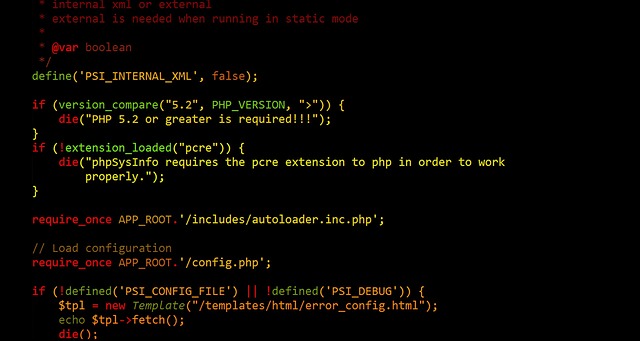Today, many businesses must face the challenge of introducing agile software development processes and dealing with associated financial expenditure and budgeting. How much budget should be given for such projects? How should teams plan spending during development? How to ensure that the software is developed on time and on budget?
In the modern working world, the implementation of agile software development has become a commonplace occurrence. Companies today must understand and have effective strategies for budgeting, estimating, and charging such projects correctly. There is no one-size-fits-all approach, however, as each project will have its own range of pricing and budgeting realities. Additionally, limited visibility into spending and budgeting makes it difficult to get an accurate understanding of what costs are involved and where agile projects can be improved. As a result, many projects run over budget or are underfunded, leading to costly delays in project completion.
In this article, you will learn how to effectively charge and budget for Agile software development projects. We will explore the strategies, tools, and processes needed to map out a successful agile budget. From conversations with respected professionals in the software development community to practical tips on how to save money in the long run, this article will take into consideration all the factors involved in successful budgeting for an agile project.
We will look at different budgeting methods, from fixed-price and time-and-materials to value-based. We will discuss the advantages and disadvantages of each approach and how to decide which one is best for a given project. Moreover, we will walk through strategies for making original estimates, preparing contingency plans, and gathering feedback on budget predictability. Ultimately, our goal is to help businesses identify practical solutions for budgeting agile software development projects and to enable organization to maximize their return-on-investment.
Definitions
Agile software development is a methodology or technique used to develop software efficiently. It follows an iterative, incremental approach to developing software products, leveraging adaptive planning, evolutionary development, and early delivery. Its goal is to enable organizations to respond quickly to changes in the environment or customer needs. It emphasizes delivering quality software as quickly as possible and using feedback from the customer to make continual improvement. In agile software development, the cost and time of development are calculated differently from traditional methods.
Budgeting in agile software development is the process of estimating the amount of resources and time needed to complete the project. It is a collaborative process between the development team and the product owner, where the product owner provides a timeline of deliverables and the development team figures out approximate costs to complete those deliverables.
Charging in agile software development is a bit different from charging in traditional development methodologies. Rather than spending time collecting and analyzing data for cost identification, in agile, developers typically use time-based pricing, which means that they charge based on the amount of time spent on a project. This approach allows for a more flexible payment structure, as it allows clients to pay based on their own budget and timeline restrictions.
Advantages of Agile Software Development Budgeting
Understanding Agile Software Development Budgeting
Agile software development budgeting is an important tool for project managers to help them stay within their allotted budget, make feasible estimates for future projects, and accurately track budgets with minimal effort. Agile software development budgeting is used by a variety of organizations, from small start-ups to multinational corporations, as a way to manage expenses and ensure that projects stay within financial expectations.
Agile software development budgeting starts at the planning stage of the project by estimating the cost of each component. This typically includes the cost of software, hardware, and any additional services that are needed. After the initial costs have been calculated, the team can then decide upon the best use of resources, decide how much the project’s budget should be, and set realistic timelines for completion.
Agile budgeting also helps teams track the delivery of products, track the progress of the project, and identify risks to completion. Teams can then focus on the areas that are most important to them and minimize costs where possible. The tracking and monitoring of the project also helps to ensure that the project is moving forward in accordance with the budget and timeline that was originally set.
Benefits of Agile Software Development Budgeting
Agile software development budgeting offers numerous advantages to project managers. These include:
- Greater visibility into progress and costs – This helps to keep projects on track and within budget.
- Risk reduction – By tracking and monitoring the progress of projects, teams can quickly identify areas that require additional attention or resources.
- Faster delivery times – Agile budgeting helps teams to better estimate time frames and identify bottlenecks to faster completion.
- More efficient resources – Agile budgeting allows teams to more accurately estimate the use of resources, reducing waste and unnecessary expenses.
- More accurate estimates of future projects – By tracking the progress, and costs associated with past projects, agile development teams can more accurately estimate budget and timelines for upcoming projects.
Agile software development budgeting also offers teams the ability to more effectively control costs, and better manage their resources. By understanding the cost of each component, and tracking progress throughout the project, projects can more easily stay within budget and be completed on-time. This helps to improve the success rate of projects, and increase the overall satisfaction of clients.
Agile software development budgeting is an important tool for any project manager and can help to ensure that projects are successfully completed within budget and on-time. By accurately tracking resources and progress, teams can better manage their costs, reduce risks, and create an efficient and productive process.
Overcoming Challenges of Agile Software Development Budgeting
Challenges to Budgeting Agile Software Development Projects
Budgeting agile software development projects presents many challenges. On the surface, they are difficult to budget as the development process is iterative, meaning that the team may not be able to accurately forecast the total cost until the project is complete. On top of that, agile software development projects usually involve multiple stakeholders that need to have input in the budgeting process, making it even more complex.
Factoring in Unforeseen Changes
Agile software development projects are often subject to unforeseen changes that occur as the development process progresses. As such, the project budget needs to factor in the possibility of changes in requirements that may be requested by stakeholders. This can be a challenge as it is difficult to forecast exactly when and how those changes may occur. Furthermore, agile software development projects often require the team to pivot quickly to incorporate the new changes, making it difficult to keep the project on budget.
Gain Buy-In From All Stakeholders
Gaining buy-in from all stakeholders is a key challenge in budgeting an agile software development project. Stakeholders may become overwhelmed by the process and the sheer volume of information they need to process. This can lead to miscommunication and reluctance to commit to a budget or timeline. The challenge is exacerbated when there are multiple stakeholders and teams involved in the project. As such, it is important for the project team to ensure that everyone is informed and on the same page when developing a budget.
One way to address these challenges is by adopting a more consultative approach to budgeting. This involves bringing together key players from different departments and teams, working collaboratively to create a budget that meets everyone’s objectives. This way, changes can be incorporated quickly and any issues or concerns can be addressed as they arise. It also helps to ensure that all stakeholders are fully informed and invested in the project before committing to a budget.
Finally, it is important to factor in some additional budget for unexpected costs. While budgeting an agile software development project is never easy, it is important to ensure that the project has a high likelihood of success by proactively addressing any challenges that may arise. By employing these strategies, project teams can develop an effective budget that meets everyone’s needs and allows for successful completion of the project.
Best Practices for Success when Charging and Budgeting in Agile Software Development Projects
Agile Software Development projects require organizations to think differently about how they budget and charge for the work they do. For many software development projects, traditional methods of budgeting and charging are no longer applicable. Agile Software Development has changed how projects are tracked, monitored, and reported, which necessitates a different approach for budgeting and charging.
The Benefits of Agile Budgetary and Charging Practices
Agile budget and charging practices are often preferred because they allow organizations to respond quickly to changes in scope and other unpredictable elements. Agile budgets also help companies to be more flexible with pricing by adjusting costs according to the scale and scope of the project. This type of flexibility is essential to projects with high complexity and short timelines.
Best Practices for Success with Agile Budgeting and Charging
The best practices for success with agile budgeting and charging include using a rolling wave approach, having different team members estimated different aspects of the project, leveraging the expertise of external partners, and having a clear distribution of income. A rolling wave approach involves breaking the project up into multiple pieces and assigning each piece a budget and time line. This ensures that all pieces of the project are given an equal amount of consideration. Additionally, having each team member estimate different aspects of the project can help to reduce biases created by relying on one individual’s estimations. Leveraging the expertise of external partners can also be beneficial, as it increases the precision of the estimates and provides an outside perspective. Lastly, having a clear distribution of income ensures that all stake holders in the project are held accountable for their portion of the project.
Ultimately, Agile Software Development projects require a different approach to budgeting and charging than traditional methods. By utilizing the best practices outlined above, organizations can successfully budget for, and charge, software development projects quickly and efficiently.
Conclusion
The question of whether or not PHP is strictly meant for web development has been asked for some time now. Is it true that PHP is only for web programming, or is there more to it than what meets the eye? The truth is there is much more to this language than meets the eye, and it can be used for many more tasks than just web programming.
If you would like to learn more about this, then be sure to subscribe to our blog. We will be releasing new topics and articles on this subject in the near future, so stay tuned for more.
To help you get started, below are answers to some of the most frequently asked questions about the PHP language and its uses.
Can I use PHP for backend applications? Yes, indeed. PHP can be used to create web applications that can interact with other web applications, databases, and other systems.
What type of other programming can PHP can be used for? PHP can be used to create almost any type of software, including desktop apps, games, mobile apps, and a variety of other types of programs.
Does PHP have an object-oriented programming language? Yes, PHP does have an object-oriented programming language. This allows developers to create reusable and extendable code, and use classes and objects to better manage data and complexity.
Is there any form of support available for PHP? Yes, PHP has a wide range of online resources, tutorials, and forums available to assist developers. There is also professional support available from many companies providing services related to PHP.
Can PHP be used for embedded systems? Yes, PHP can be used to program embedded systems. This can be used to control the device or interact with it, such as for sensor readouts or controlling other systems.



